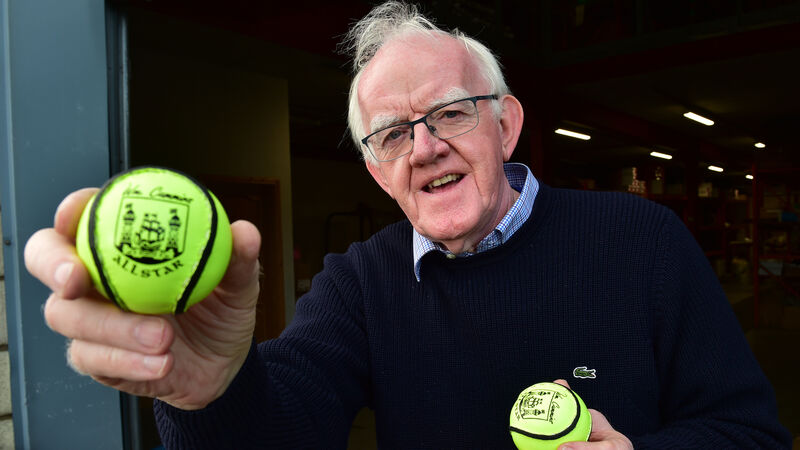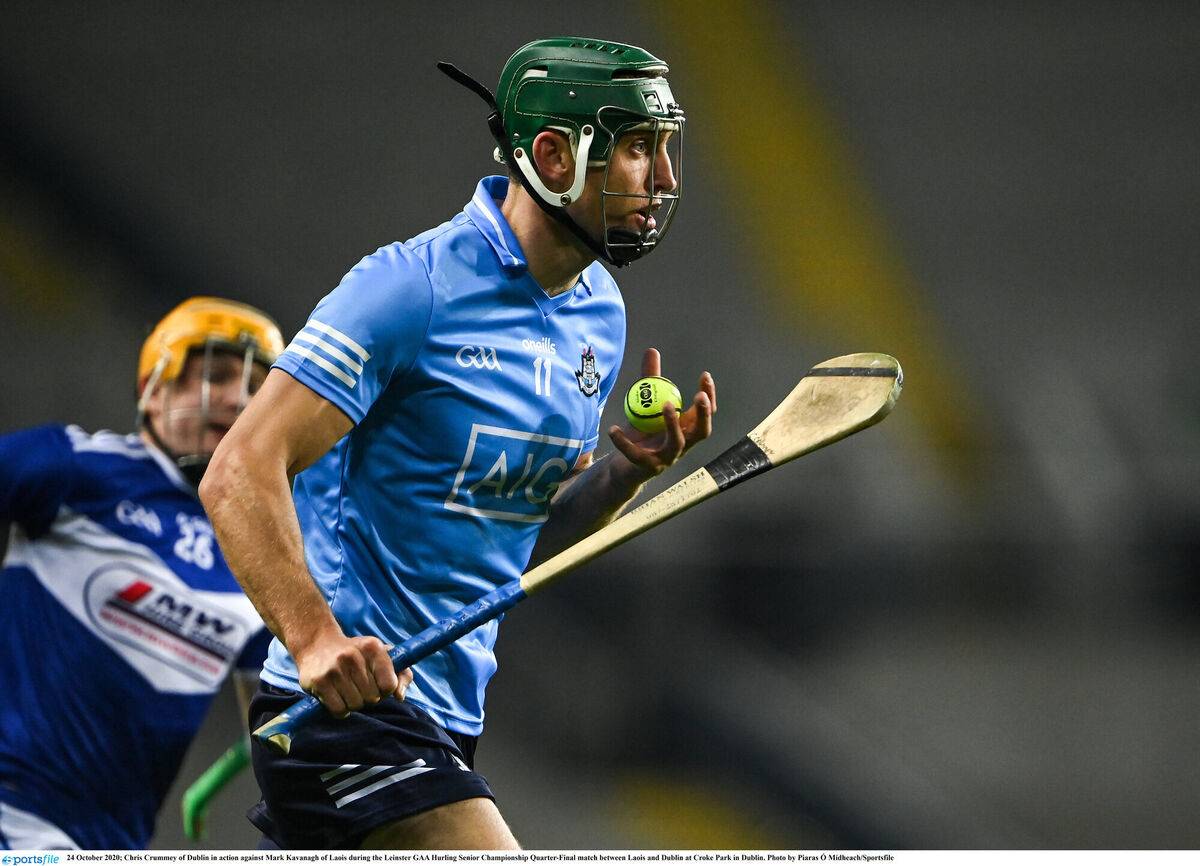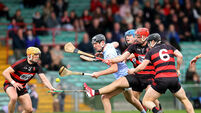Kevin Cummins: A consistent sliotar has had a huge impact on how hurling is played

Kevin Cummins with the new yellow sliotars which will be used in this year's championship. Picture Dan Linehan
John Fogarty’s article in Tuesday’s gave a vivid picture of the impact Covid-19 has had on inter-county competitions, both from the players’ and the journalists’ perspective. I was interested in the '10 reasons for high scores' and while I agree with most of them I would like to add some light and, maybe, contradict his point on the sliotar.
As my family has a vested interest in said sliotar, I have watched with interest the mounting scores in games in recent years and the accompanying commentary.
There is no doubt that the huge improvement in skill levels and conditioning of the modern hurler in our own lifetime has played a massive part in the increased scoring.
Now that most, if not all, past provincial, National League and All-Ireland hurling finals are available online, the dramatic improvement in skill levels in, say, the past 15 years is dramatic.
However, I have no doubt that the consistency of the sliotar in recent times has had a huge bearing on the improvement in skill levels that we marvel at today.
We have been manufacturing our ‘All-Star’ sliotar now for 45 years, since 1975. The ‘All-Star’ was first used in an All-Ireland final in 1976 – giving rise to my late father’s quip from high up in the Hogan Stand, “They’re my balls they’re playing with” - ignoring the fact that his two sons were also playing!
My late father, Willie Cummins - in the half-back line with Christy Ring when the latter won his first All-Ireland medal for minor hurling in 1938 - began making the ball that still bears his signature today in a garden shed at the back of our house in Ballinlough.
At that time the core of the ball consisted of a small cork ball – about the size of a golf ball – which was wound around with, well, whatever you’re having yourself! It depended on what was available at the time: wool, twine, hemp, gut, whatever he could get his hands on.
Eventually, he struck up an arrangement with Youghal Carpets who supplied him with remnants of cones of wool used in the making of their carpets which lent a certain consistency to the finished ball.

Willie gathered around him a loose collection of retirees like himself, many of whom were shoemakers, well used to working with leather, who worked from home stitching balls for him. He would provide them with the raw materials, pre-cut and punched leather ‘figures of eight’ and pre-wound cores of cork and wool and he would travel around the county collecting their handiwork which he would then bring home to polish the rims and stamp them with his name and coat of arms.
Because my father wasn’t the only sliotar-man working from home – every county had their own source of sliotars – there was huge inconsistency in the standard of balls produced. Still, in those early years, my father’s sliotar was regularly chosen by Croke Park on All-Ireland day. (Would it be too boastful to mention that the Wm. Cummins ‘All-Star’ sliotar has been the ball of choice for the past 10 All-Ireland finals!).
Croke Park finally took a stand and introduced specific specifications for the sliotar.
In order to be awarded the Croke Park official stamp, manufacturers had to submit a dozen balls to Dublin City University for testing: weight, diameter, co-efficient of restitution (how high the ball bounces from a steel floor when dropped from a given height).
In order to keep track of how our manufacturing process was faring, we persuaded Cork IT to set up a lab where the DCU tests were replicated and we could stay on the straight and narrow with our sliotar specs.
As my father’s generation of stitchers began to die away and it became impossible to replace them, the manufacture of sliotars moved to Pakistan, a country synonymous with the manufacture of cricket balls for their native sport.
This move also coincided with the introduction of a moulded core to replace the traditional hand-wound woollen centre with all its inconsistencies – and that has made all the difference.
This is when the sliotar as we know it today ‘came of age’. It now became possible to produce sliotars of a consistency that was impossible heretofore. This meant that every night a team went out to train or play a match they were using exactly the same sliotar as they used the first night they began training.
I’m sure Pat Horgan must hit close to a thousand frees every week. When he stood over that far-from-easy free in the last minute of the All-Ireland semi-final against Limerick two years ago he could be assured the ball that faced him was exactly the same ball he pucked around with up in the Glen Field at the start of the season.
The ball is exactly the same weigh as it always was, it’s the same dimensions as it always was, but it’s the consistency of the core that has changed the ball for the better.
And it’s this consistency, in my opinion, that has made a huge difference to the confidence the modern hurler has when handling or striking the sliotar.
I’m always intrigued when watching subs puck-around at half time – when they’re allowed on the sacred sod - and the ’tricks’ they can effortlessly perform, especially when controlling a ball struck towards them. The ability of the ‘modern’ player to bring a flying sliotar under control effortlessly with his hurley can be breath-taking.
It’s a theory I’ve held for some time now: the consistent sliotar has had a huge impact on how the game of hurling is played – or can be played, with pin-point accuracy in the pass and the score-taking.
We’ll just have to see how the yellow sliotar fares, although I must confess it looked really well at the weekend on TV – especially when the flood-light were switched on. (The morning after the announcement from Croke Park I had to drop balls down to the Cork lads in Páirc Uí Rínn and then drive to Galway, Limerick, Ennis and Thurles delivering yellow balls to the county teams, as well as couriering balls to Dublin and Wexford.)
These inter-county guys don’t let the grass grow under their feet...










